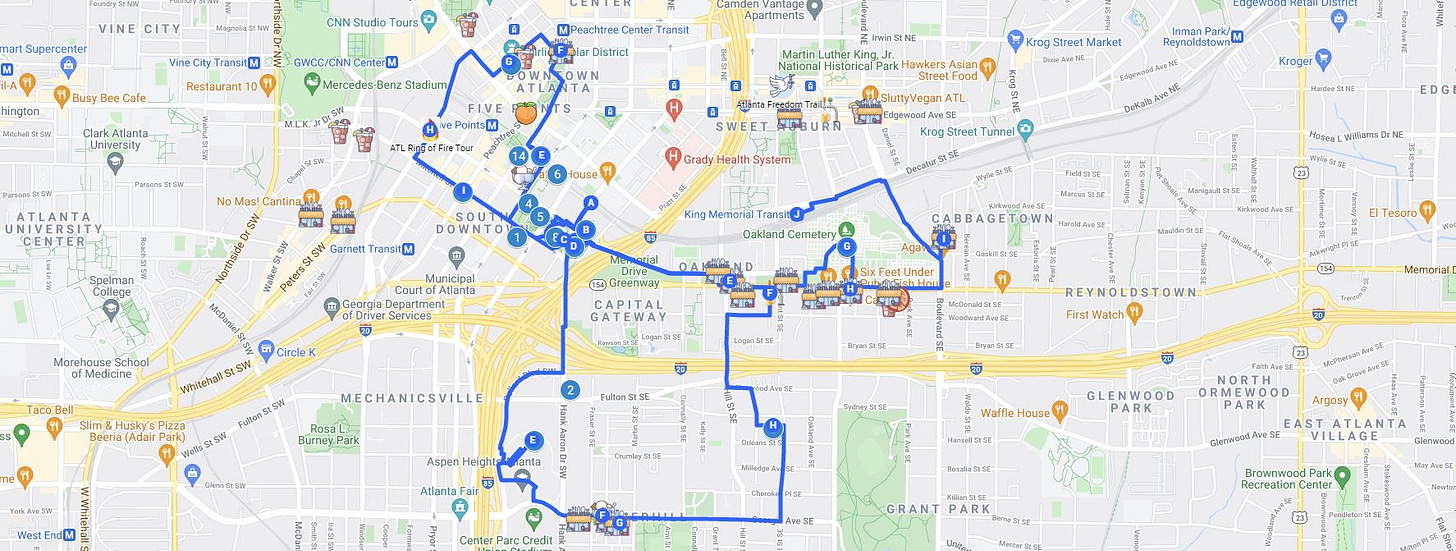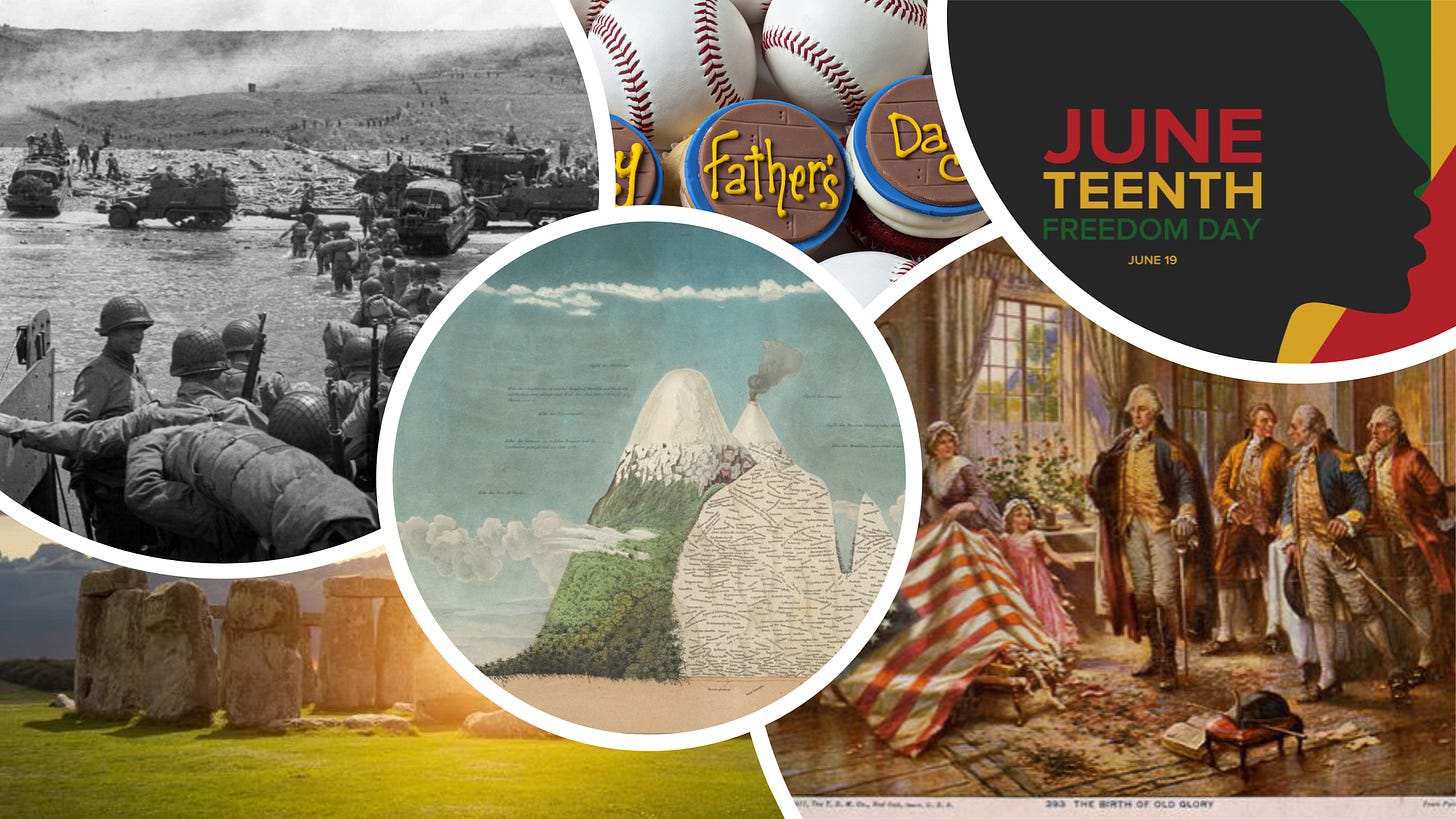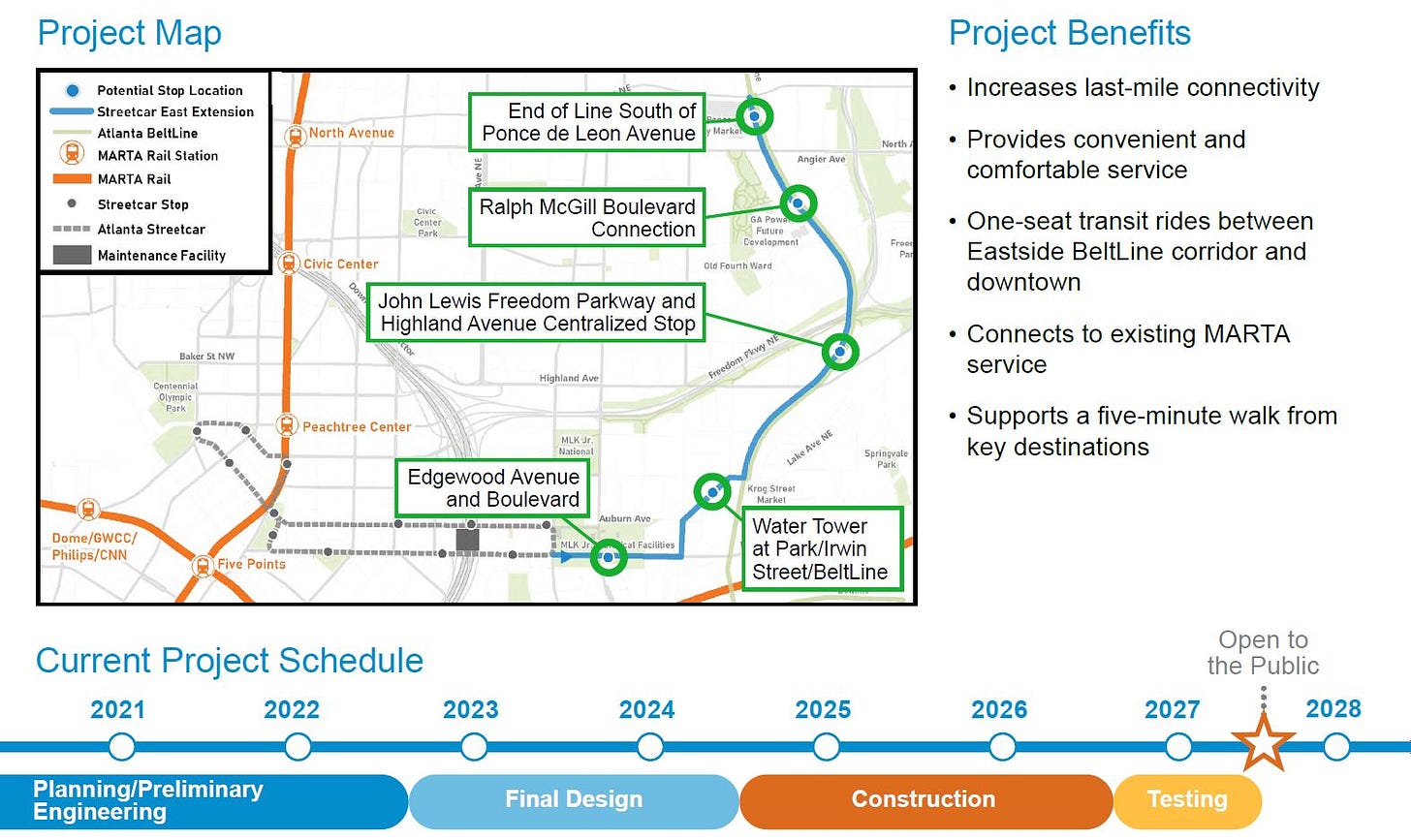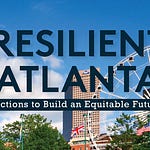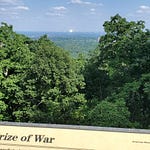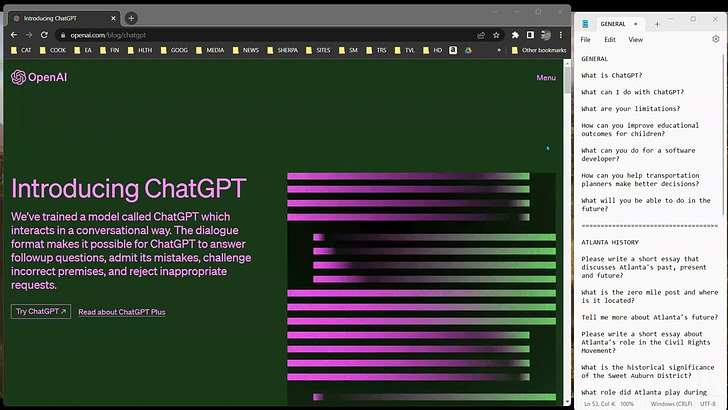Hello, summer!
Did you know…
There's a good reason June is so popular for weddings. In addition to nearly perfect weather, the month of June is considered auspicious for weddings because the month is named after Juno, the Roman goddess of marriage, home, and family. Juno was a champion of women and protector of the Roman state. She was married to Jupiter, king of all the gods, and served as a part of the divine ruling triumvirate known as the Capitoline Triad. Source: Mythopedia
In This Issue [3:55]
[audio start times for each section]
June Field Trip Suggestion [06:40]
Six Days to Celebrate in June [13:55]
Alexander von Humboldt: An Explorer’s Explorer [17:00]
Atlanta Streetcar East Extension: My Thoughts [34:35]
Summer Reading List [1:04:00]
June Field Trip Suggestion [6:40]
Here’s a fun and interesting '“field trip” you can take with your family and friends to celebrate Memorial Day, D-Day and/or Flag Day…
Take MARTA to the Georgia State station
Walk to the Pete Wheeler Georgia War Veteran’s Memorial Plaza
Walk to the flag court in Liberty Plaza
Tour the Georgia State Capitol grounds (take museum tour if possible)
Explore the area with this interactive map — I’ve included three walking tours on the map that you can take (2-3 miles each)
ATLsherpa Notes
You will have the place to yourself if you go on a weekend.
BUT, if you want to tour the inside of the Georgia State Capitol, which I highly recommend, you will need to go on a weekday. Be sure to check their website and make sure they are offering the tours.
Allow 3 — 4 hours to take it all in. It is definitely worth your time and effort!
Spend some time at the Pete Wheeler Memorial Plaza (at least 30 minutes). Take in the profundity of this solemn place and read the markers. Do the same in Liberty Plaza and the Georgia State Capitol.
Use this website to familiarize yourself with these places before you go.
Six Days to Celebrate in June [13:55]
Follow the links below to learn more about these June holidays…
June 3 — Chimborazo Day (One Travel)
June 6 — D Day, WWII (U.S. Army)
June 14 — Flag Day (U.S. Library of Congress)
June 19 — Juneteenth (New York Times)
June 20 — Summer Solstice (Farmer’s Almanac)
June 20 — Father's Day (Good Housekeeping)
Alexander von Humboldt: An Explorer’s Explorer [17:00]
June 3 is Chimborazo Day! What is Chimborazo, you ask? Read on…
Friedrich Wilhelm Heinrich Alexander von Humboldt (14 September 1769 – 6 May 1859) was a German polymath, geographer, naturalist, explorer, and proponent of Romantic philosophy and science. Humboldt's quantitative work on botanical geography laid the foundation for the field of biogeography. Humboldt's advocacy of long-term systematic geophysical measurement laid the foundation for modern geomagnetic and meteorological monitoring.
“Humboldt was one of those wonders of the world who appear from time to time, as if to show us the possibilities of the human mind.” — Ralph Waldo Emerson
Between 1799 and 1804, Humboldt travelled extensively in the Americas, exploring and describing them for the first time from a modern Western scientific point of view. His description of the journey was written up and published in several volumes over 21 years. Humboldt was one of the first people to propose that the lands bordering the Atlantic Ocean were once joined. He was the first person to describe the phenomenon and cause of human-induced climate change, in 1800 and again in 1831, based on observations generated during his travels. Source: Wikipedia
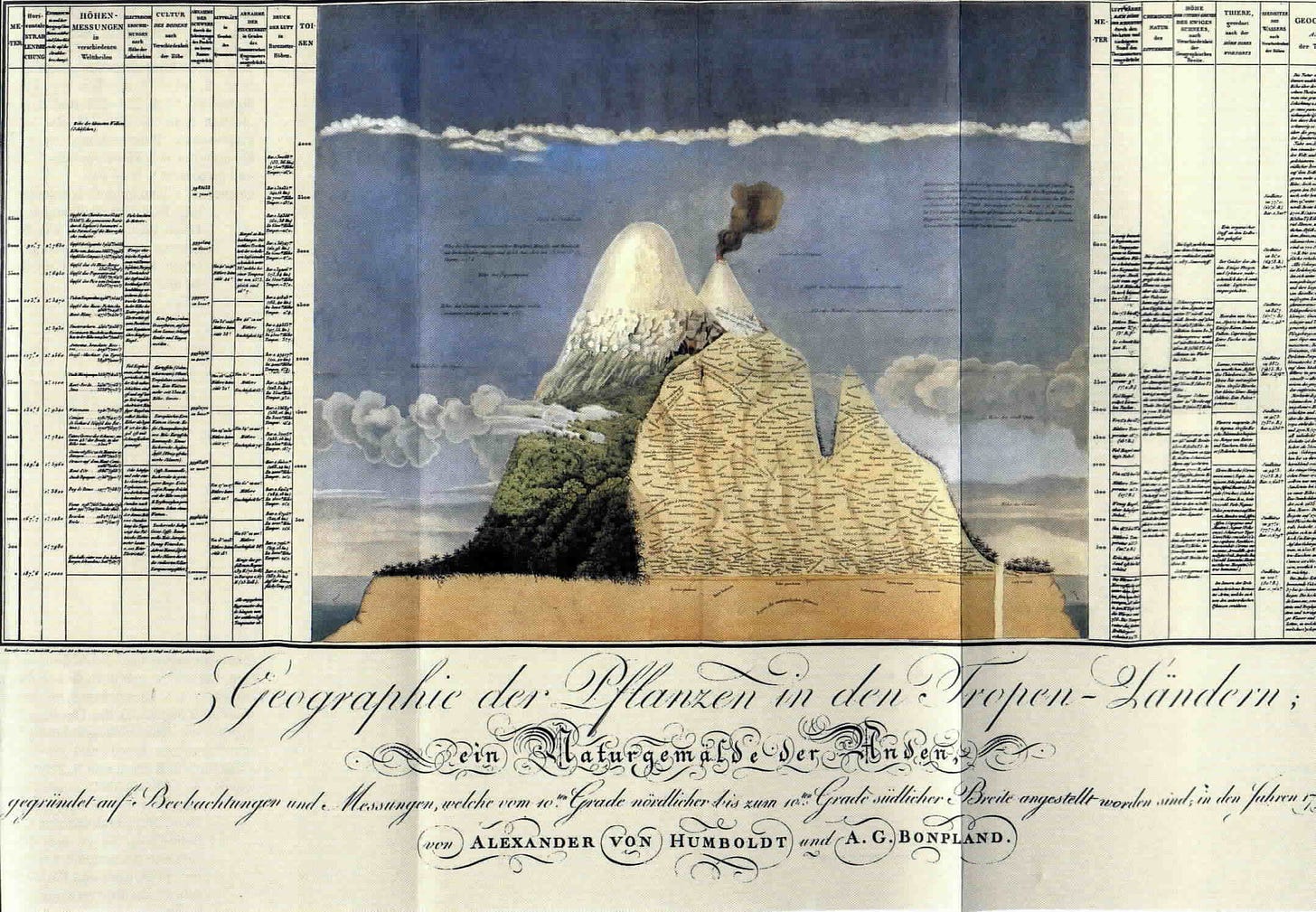
Although Humboldt’s name has practically vanished, his ideas have not. Many of his new ideas simply became an accepted part of what we know about this planet; others were superseded by his colleagues and successors. However, between the 1820s and 1850s Alexander von Humboldt was one of the most widely admired public figures in the world.
Humboldt, who died at 89, traveled on four continents, wrote more than 36 books and 25,000 letters to a network of correspondents around the globe. He had an infectious personality and boundless curiosity, surrounded himself with some of the leading minds of his era and never stopped talking. Charismatic, annoying, exuberant, caustic, but undeniably relevant, Humboldt straddled the enlightenment penchant for wanting to know everything about everything and the establishment of modern scientific methods designed to query that accrued knowledge. Source: Smithsonian Magazine
Frederic Church painted Heart of the Andes as his final homage to naturalist Alexander von Humboldt. This immersive 2.5D digital experience offers extreme close-up views of Church's South American landscape. The must-watch video above is narrated by SAAM curator Eleanor Jones Harvey, who takes viewers on an immersive journey to discover the connections between Humboldt's ideas and Church's ambitious painting. Discover more about Humboldt's influence on American art with the SAAM exhibition "Alexander von Humboldt and the United States: Art, Nature, and Culture". — Smithsonian American Art Museum (Washington D.C.)
"Heart of the Andes is a visual summation of Humboldt's influence on Frederic Church and a testament to the explorer's deep and sustained influence on American art." — Smithsonian American Art Museum
In the video above, Andrea Wulf — author of The Invention of Nature — articulates beautifully the life of Alexander von Humboldt and the extraordinary impact he had on mankind.
My thoughts about the Atlanta Streetcar East Extension [34:35]
Backstory
The Streetcar East Extension project is the first extension of the existing downtown Streetcar, originally opened in late 2014. This project runs along Edgewood Avenue to the BeltLine at Irwin Street and up to the Poncey-Highland neighborhood.
In 2018, MARTA formally took on ownership of the existing downtown Streetcar and future expansions of the streetcar system. The Streetcar East Extension project is advancing based on a detailed review of the planning and design work prepared by Atlanta BeltLine, Inc. (ABI) on behalf of the City of Atlanta (COA). Preliminary engineering of this corridor continues to advance considering possible effects to adjacent properties, existing utilities, vehicle and operational needs, neighborhood accessibility, and proposed stop locations. This project has advanced with continued coordination with CoA and ABI. Source: MARTA
We are talking about a 90-ton vehicle* travelling 2 to 25 miles per hour inside the Beltline corridor…
Mass transit, also called mass transportation, or public transportation, the movement of people within urban areas using group travel technologies such as buses and trains. The essential feature of mass transportation is that many people are carried in the same vehicle (e.g., buses) or collection of attached vehicles (trains). This makes it possible to move people in the same travel corridor with greater efficiency, which can lead to lower costs to carry each person or—because the costs are shared by many people—the opportunity to spend more money to provide better service, or both. — Encyclopedia Britannica
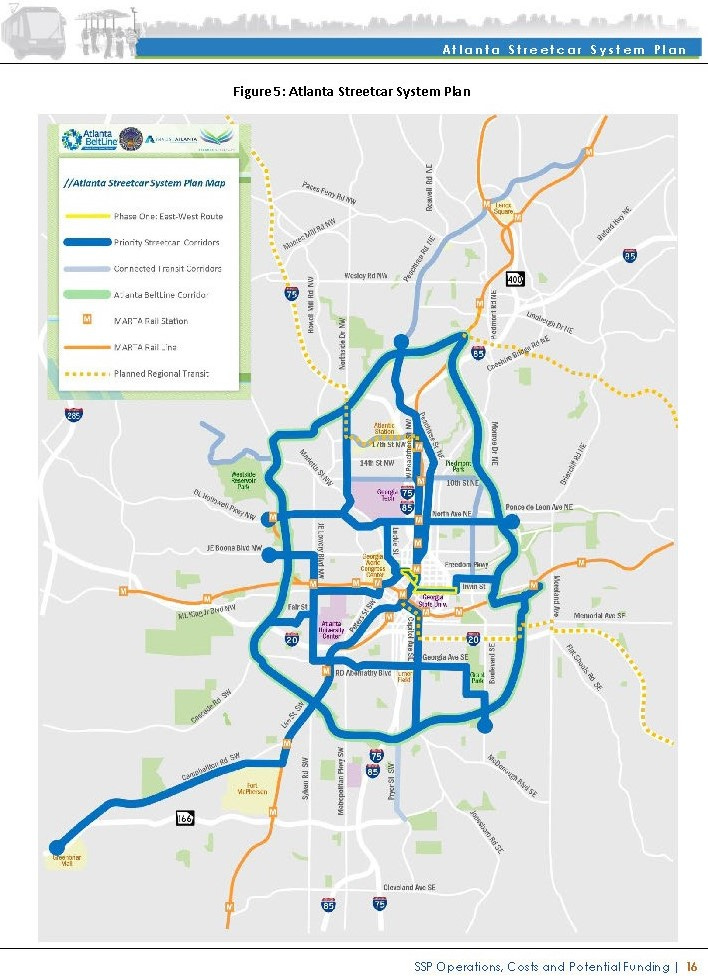
* The Siemens S70 Streetcar actually weighs about 48 tons (96,500 lbs) but still…
The video above is the recording of the March 27, 2021 public update. If you watch this video first, my comments below will make more sense…
My thoughts…
Beltline = Mass transit
Solution looking for a problem?
Throwing good money after bad?
Low (mass transit) priority vs other areas
Construction disruption
EV, AV and AI technologies are advancing faster than many realize
These disruptive technologies will alter mobility needs and habits
A LOT has changed since 1999
Are we better off employing more flexible, scalable options such as BRT?
MARTA is seeking public input now
Today's era is one of unprecedented disruptive innovation in mobility. Many transportation agencies’ processes and procedures are rooted in the mid-20th century and could be ill-suited to today’s rapidly evolving landscape. In the last decade alone, the transportation ecosystem has expanded to include transportation network companies, ride-hailing, car-sharing, bike-sharing, micro-mobility, and micro-transit, as well as digital trip planning, ticketing, and payment. At the same time, changes in commuting habits and demographic shifts are altering the economics of mass transit.
Traditional transportation agencies aren’t built for rapid innovation. Their typical decades-long planning cycles and procurement processes and workforce systems tend to be incompatible with many new approaches—and could hinder their ability to thrive in the future of mobility.
— Deloitte, from Transportation Agency of the Future: Managing mobility amid disruption and digitization (Aug 2020)
Summer Reading / Watching List [1:04:00]
Here are some articles, papers and videos you might find interesting…
Atlanta Freedom Trail — ATLsherpa [virtual tour]
Best Places to Live in America 2021 (ATL, #42) — Niche
Big Ideas Report 2021 — ARK Invest (2021)
Emerald Necklace Study — Alexander Garvin (2005)
Future of Wealth in the USA: Mapping Trends in Generational Wealth — Deliotte [interactive map] (2015)
Hudson River School — Metropolitan Museum of Art
Humboldt’s Gift — New Yorker (2015)
So You Want to Learn About Juneteenth? — New York Times (2020)
Which U.S. Generation Wields the Most Cultural Power? — Visual Capitalist (2021)
World of Alexander von Humboldt — Smithsonian [video]
The Invention of Nature — Andrea Wulf (here’s your summer read)
Ken Dychtwald — Get to know this man and his work!
ATLsherpa is an educational podcast & newsletter for people who would like to know Atlanta on a deeper, more meaningful level. My mission is to help you connect with ATL’s past, present, and future. Steve Saenz, ATLsherpa




